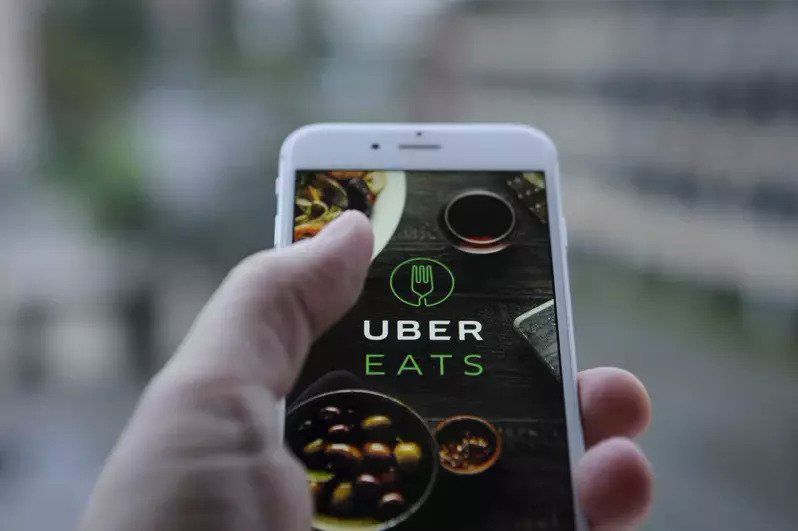DOES UBER EATS DO ENOUGH TO PROTECT AGAINST TAMPERING?
In the wake of Australia’s needle crisis, the issue of food tampering and general food safety has been front of mind consumers on both sides of the Tasman. Tamper-proof packaging enjoyed a time in the spotlight – an issue further highlighted earlier this month, when footage went viral of an Uber Eats delivery driver on Australia’s Gold Coast helping himself to a handful of chips from a customer’s order.
For all its convenience, third-party delivery comes with its risks. Food is placed in the hands of someone who is, essentially, a stranger to both the restaurant and the customer. Even if the food leaves the restaurant in perfect condition, if it arrives at the door of the customer in a less-than-favourable condition, customers will see that blame falls partially on the restaurant.
Although the incident in Australia was the first to be caught on camera, the online platform Uber People, which touts itself as an “independent community of rideshare drivers, features a number of comment threads from Uber Eats drivers in the US boasting about how they use the app to get free food.
“I use Uber Eats to get free food, I pick it up and never say I did when I go to the restaurant.” – Ab85
“Just accept an eats order and tell Uber you ran out of gas or got a flat. You can tell them you dropped the food, you think the food smells funny, anything really, and Uber will instruct you to throw the food away. Nothing bad happens to you. No need to steal it from the restaurant.” – Jagent
“This is the result of being underpaid with no tips. Hungry drivers are nibbling on customers food. If Uber raised the fee things would go smoother with less nibbling. Drivers should be paid fairly to eliminate any food stealing. I can’t blame the driver when they are starving and can hardly afford food and car maintenance and gas.” – Kay1661
"We know how important food safety is, and we ask delivery-partners to take great care during the delivery process to ensure the quality of meals they deliver for restaurants reflect the restaurant’s standards,” said a spokesperson for Uber Eats New Zealand. “Delivery-partners using Uber Eats are expected to comply with the Uber Eats community guidelines which explain they can lose access to the app for tampering with orders.”
The spokesperson wouldn’t be drawn on just how often they receive complaints from customers about drivers tampering with their food, or what standard practice was if a driver was caught.
“We have a 24/7 support team who address any issues directly with the restaurant-partner and delivery-partner on a case by case basis,” they said. “Customers can contact the Uber Eats support team via in-app help.”
Uber Eats encourages restaurants to use a sticker to seal the bag, as well as the order, but there is no process for enforcing the recommendations. The company also issues a list of guidelines for all users of the service, and insist that drivers “ensure that the item (i.e. food, parcel) is delivered in accordance with relevant safety standards,” warning that drivers could lose access to the app if they are found to have violated the rule.
“Sometimes, a consumer will let our support team know that their order was opened, damaged or that items were missing,” the ‘Top Tips’ read. “This could mean items have been opened, the packaging may be damaged, items are missing or, in rare cases, that some of the order may have been eaten.”
The ‘Top Tips’ also include suggestions such as not transporting pizzas on their side and keeping soft drink cups upright during transportation.
None of the restaurants spoken to by Restaurant & Café had experienced complaints from customers about delivery drivers eating their food, although one noted that it was unlikely that any record of the complaint would make it back to the restaurant, given it was an internal Uber issue.
McDonald’s spokesperson Simon Kenny was confident that the fast food giant’s practices were sufficient to protect against interference.
“All our orders are in the normal McDonald’s packaging and takeaway bags and then go into Uber Eats bags, which are sealed with tamper-proof stickers,” he explained. “If the customer received their delivery and someone had tried to get into the bag, they’d be able to tell.”
The US is leading the charge when it comes to ensuring that food can’t be interfered with between the restaurant and the customer, due in no small part to the culture of litigation. The potential cost of a lawsuit if a restaurant was found to be negligent in its food safety processes has the potential to ruin a small restaurant and provide significant headaches for bigger chains like Chipotle or Chick-Fil-A. Nutphree’s Bakery in Chicago, which specialises in cupcakes, cookies and baked good, specifies on its ordering page that the goods will be “packed in plastic, tamper-proof containers.” A burger chain in Florida created its own tamper-proof bag by sticking a strip of double-sided tape along the inside edge of the bag, allowing it to be sealed from within.






